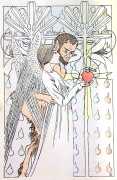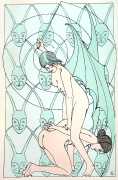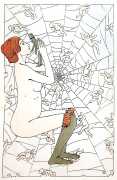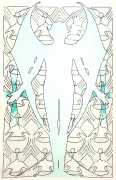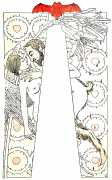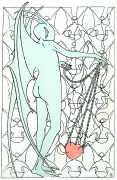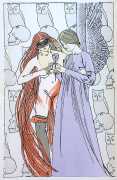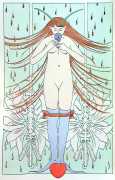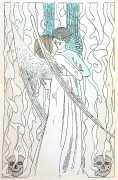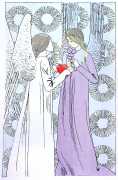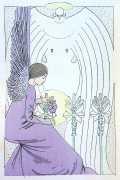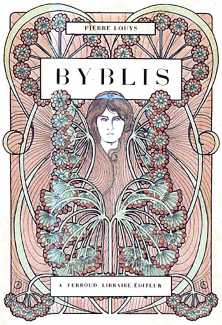
The French artist, illustrator and poet Henri Émile Caruchet grew up in Bar-sur-Seine, a small town south-west of Paris. In 1892 he entered the École Nationale des Beaux-arts (National School of Fine Arts) in Paris where he attended the courses of Gustave Moreau, Mathias Duval and Ernest Ange Duez.
In December 1896 he married Jeanne Joséphine Nouguès, daughter of a militant republican and an early feminist who wrote for the newspaper La Fronde (The Sling) and was the author of several books, including the treatises on women’s choices and abortion, L’unique maîtresse (The Only Mistress, 1902) and L’ensemencée (Insemination, 1904). Jeanne died in January 1906, and in December 1907 Henri married Marie Gabrielle Valentine Edmée Achard.
During the First World War, Caruchet illustrated many patriotic postcards, notably for the Republican League for National Defence. A member of the Société Nationale des Beaux-arts (National Society of Fine Arts), he contributed illustrations in his trademark Art Nouveau style to magazines including Gil Blas, Courrier Français (under the pen name Henrik Barsen), Monde Moderne, Revue Illustrée, Mois Littéraire et Pittoresque (Literary and Picturesque Monthly), Les Annales Politiques et Littéraires, La Revue des Lettres, and Omnia, a practical review of the automobile.
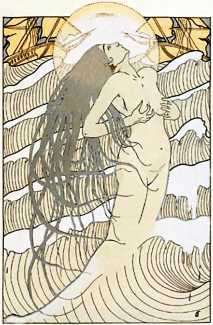
As a book illustrator, he created plates for more than twenty books, including Octave Uzanne’s Voyage autour de sa chambre (Voyage Around His Room) and Pierre Louÿs’ Byblis. In November 1933 the Écale Gallery in Paris exhibited some sixty of his watercolours and sanguines. His style has been described as symbolist, and many of his illustrations include elements which can be seen as indicative of mortality, seeking to represent significant ideas through metaphorical images.


